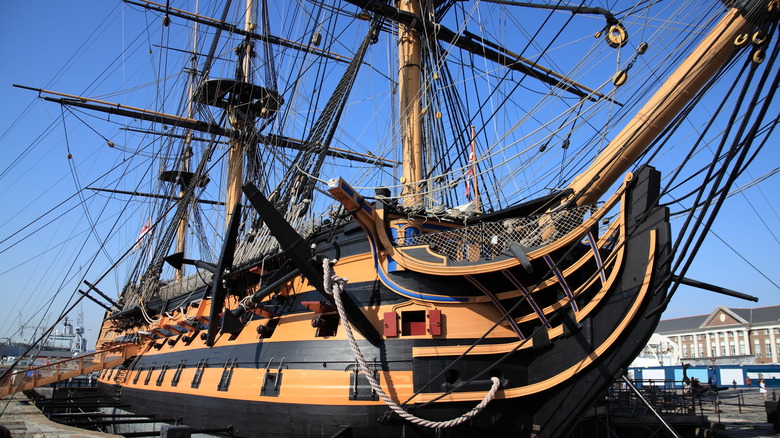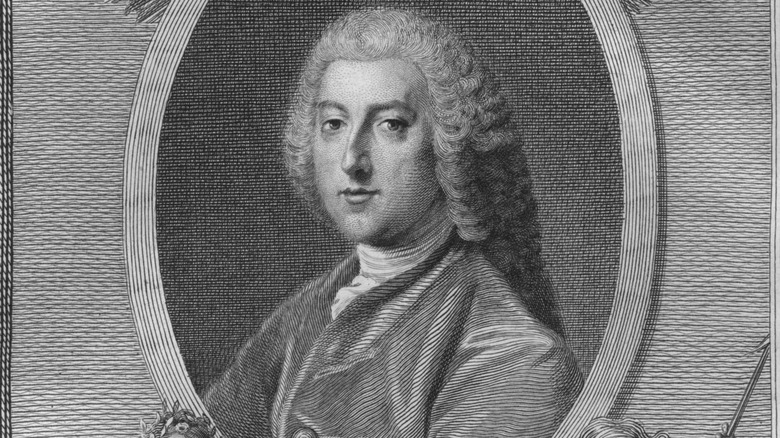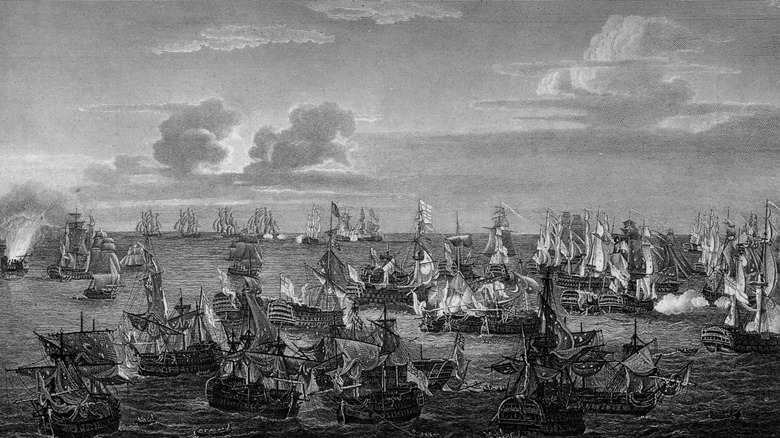The Royal Navy Has A Warship Still In Service That Is Nearly 300 Years Old
On the afternoon of Oct. 21, 1805, as the battle between the British Fleet and the combined forces of the French and Spanish navies raged off the Spanish coast near Cape Trafalgar, a French sharpshooter took careful aim. The man was atop the mizzenmast of the French warship Redoutable that had become entangled with Vice Admiral Horatio Lord Nelson's flagship, the HMS Victory, as they blasted away at one another at close quarters, according to the Royal Museums Greenwich.
Nelson, standing on the Victory's quarter-deck with Captain Thomas Hardy, suddenly crumpled and fell. "The ball struck the epaulette on his left shoulder, and penetrated his chest," Dr. William Beatty, the ship's physician, recalled, per EyeWitness to History. "He fell with his face on the deck." A few hours later, Nelson, already a hero in his homeland, died, cementing his place in the UK's pantheon of war heroes. Along with Nelson, his ship, the HMS Victory, would also become hallowed.
They launched the ship before the birth of the U.S.
In 1758, Britain's prime minister, William Pitt the Elder, with Parliament's approval, ordered the construction of 12 new warships, including a 100-gun vessel, since the country was amid a war with France that ranged from the Mediterranean to the American colonies, according to the book "HMS Victory Pocket Manual 1805: Admiral Nelson's Flagship At Trafalgar." Sir Thomas Slade, the Surveyor of the Navy, designed the ship that was built at the Chatham dockyards and took 6,000 trees cut from a 100-acre swath of oak forest in Sussex and Kent to complete, per HMS Victory Pocket Manual and the Ipswich Society.
By the time the British Navy launched the ship in 1765, the Seven years' War had already been over for two years, but another war was brewing, this one with the former British colonies in America. Finally commissioned in 1778, the HMS Victory saw duty during the American Revolution as the flagship of the British Channel and Mediterranean fleets, per Britannica.
You can visit the ship today
With 104 guns that could easily rip through enemy ships, a sleek design that made it faster than much smaller ships, and a crew of 800 men, the HMS Victory was a formidable weapon, comparable to an aircraft carrier today, according to Royal Museums Greenwich and HMS Victory Pocket Manual 1805. By the time HMS Victory became Lord Nelson's flagship in 1803, when England went to war against Napoleon and his armies, the ship had proved its mettle in countless battles. While Nelson lay dying in the ship's cockpit, the battle of Trafalgar raged on with the British eventually winning the day thanks to Nelson's battle strategy, per the Royal Museums Greenwich.
In 1823, the Navy removed HMS Victory's masts and permanently moored it the in Portsmouth Harbour where it served as the Flagship of the Sea Lord (the head of the Royal Navy) and also became a tourist attraction. By the 1920s, the ship was in awful shape and was eventually hauled up onto dry land where it remains today, the world's oldest commissioned warship, per the Historical Naval Ships Association.


